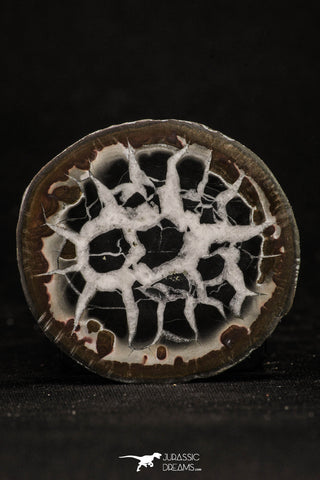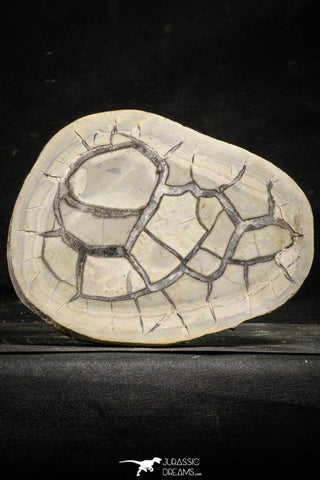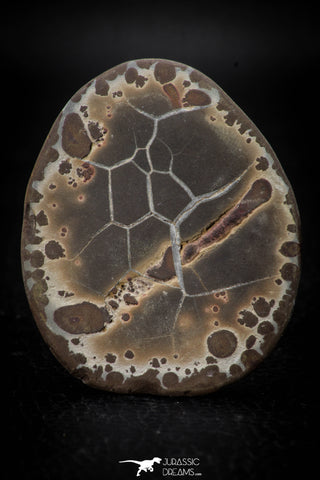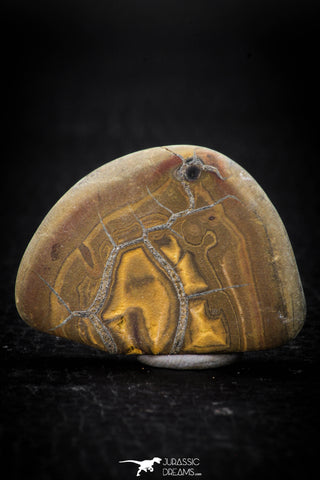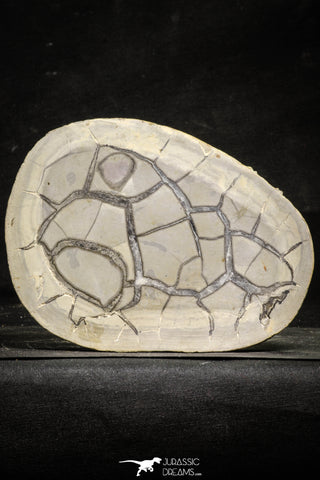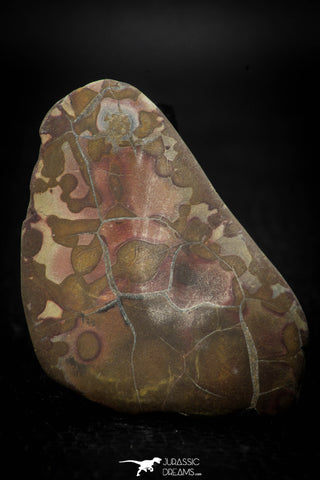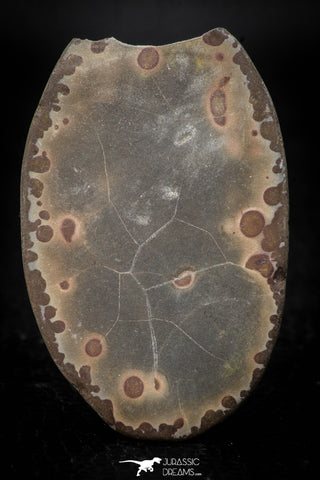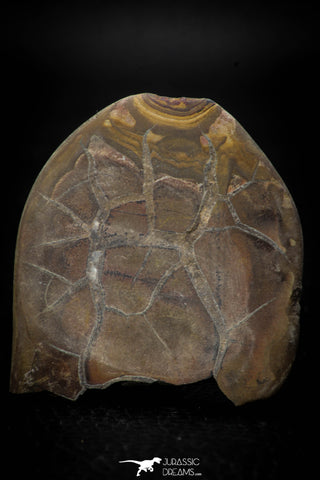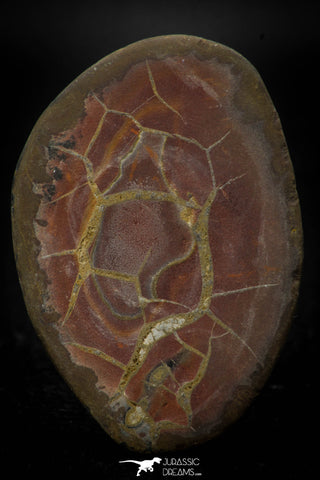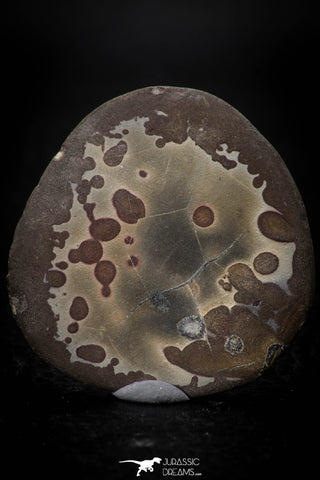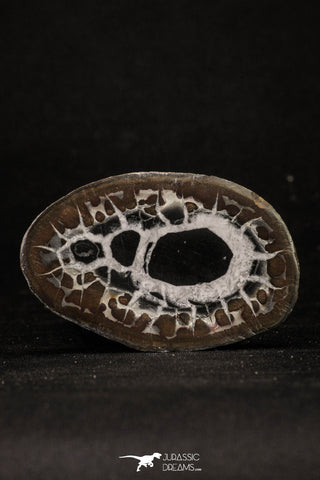Septarian nodules
Septarian concretions or septarian nodules, are concretions containing angular cavities or cracks, called "septaria". The word comes from the Latin word septum; "partition", and refers to the cracks/separations in this kind of rock. Cracks are highly variable in shape and volume, as well as the degree of shrinkage they indicate. Although it has commonly been assumed that concretions grew incrementally from the inside outwards, the fact that radially oriented cracks taper towards the margins of septarian concretions is taken as evidence that in these cases the periphery was stiffer while the inside was softer, presumably due to a gradient in the amount of cement precipitated.
The process that created the septaria that characterize septarian concretions remains unclear. A number of mechanisms have been proposed, including the dehydration of clay-rich, gel-rich, or organic-rich cores; shrinkage of the concretion's center; expansion of gases produced by the decay of organic matter; or brittle fracturing or shrinkage of the concretion interior by either earthquakes or compaction (Pratt 2001; McBride et al. 2003). Septaria usually contain crystals, often calcite, that precipitated from circulating solutions. Siderite or pyrite coatings are also occasionally observed on the wall of the cavities present in the septaria, giving rise respectively to a panoply of bright reddish and golden colors.
The process that created the septaria that characterize septarian concretions remains unclear. A number of mechanisms have been proposed, including the dehydration of clay-rich, gel-rich, or organic-rich cores; shrinkage of the concretion's center; expansion of gases produced by the decay of organic matter; or brittle fracturing or shrinkage of the concretion interior by either earthquakes or compaction (Pratt 2001; McBride et al. 2003). Septaria usually contain crystals, often calcite, that precipitated from circulating solutions. Siderite or pyrite coatings are also occasionally observed on the wall of the cavities present in the septaria, giving rise respectively to a panoply of bright reddish and golden colors.



